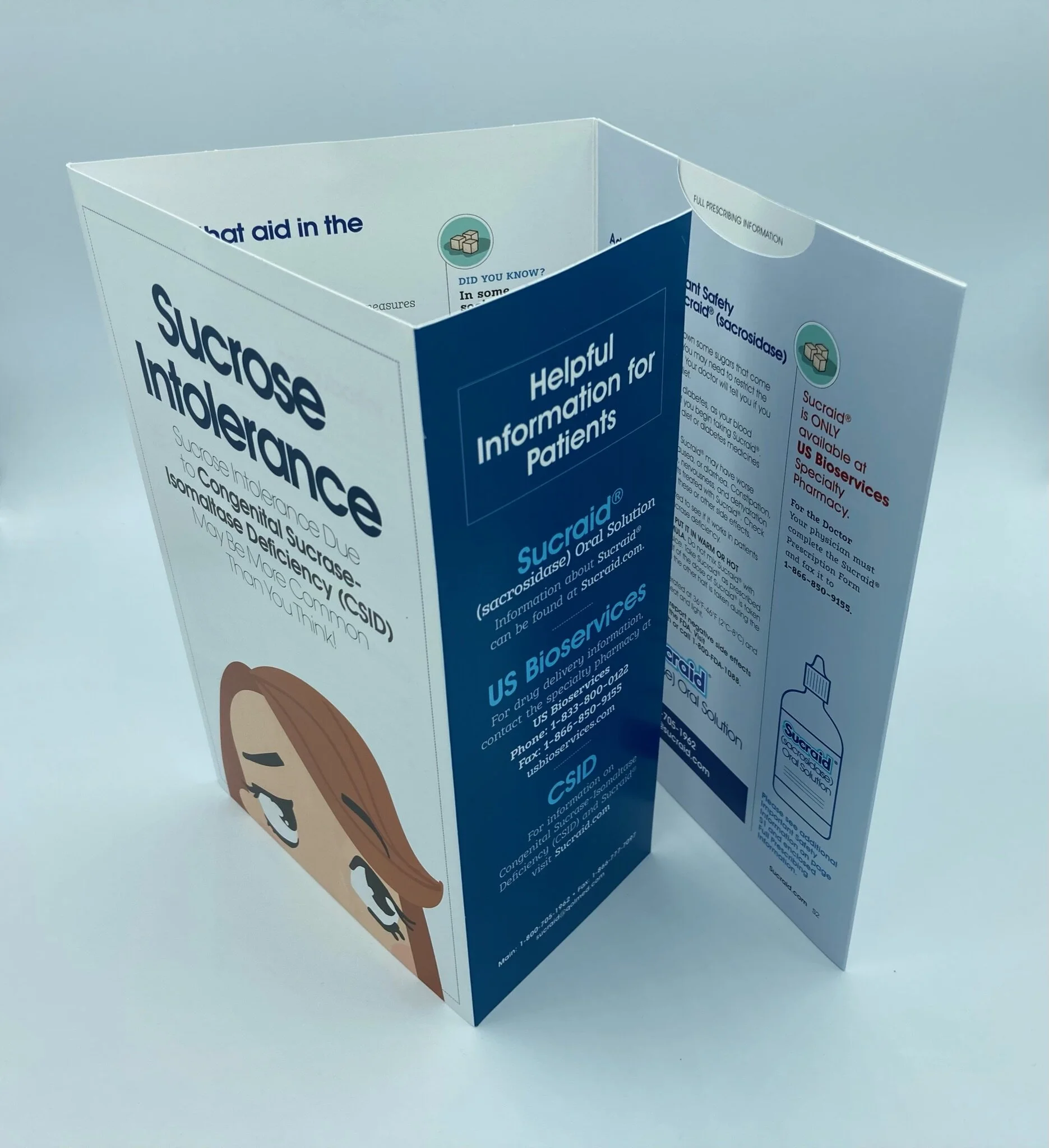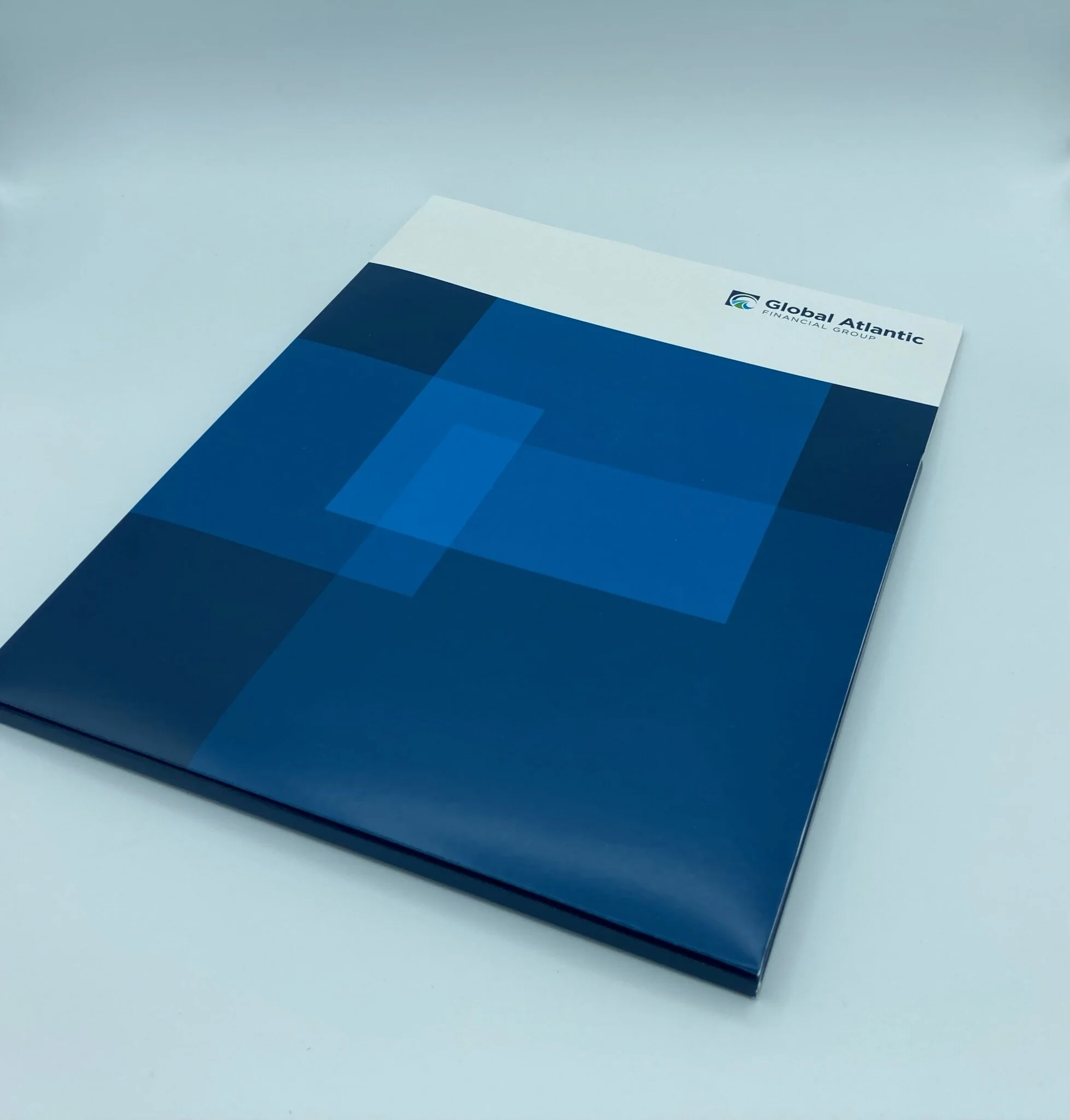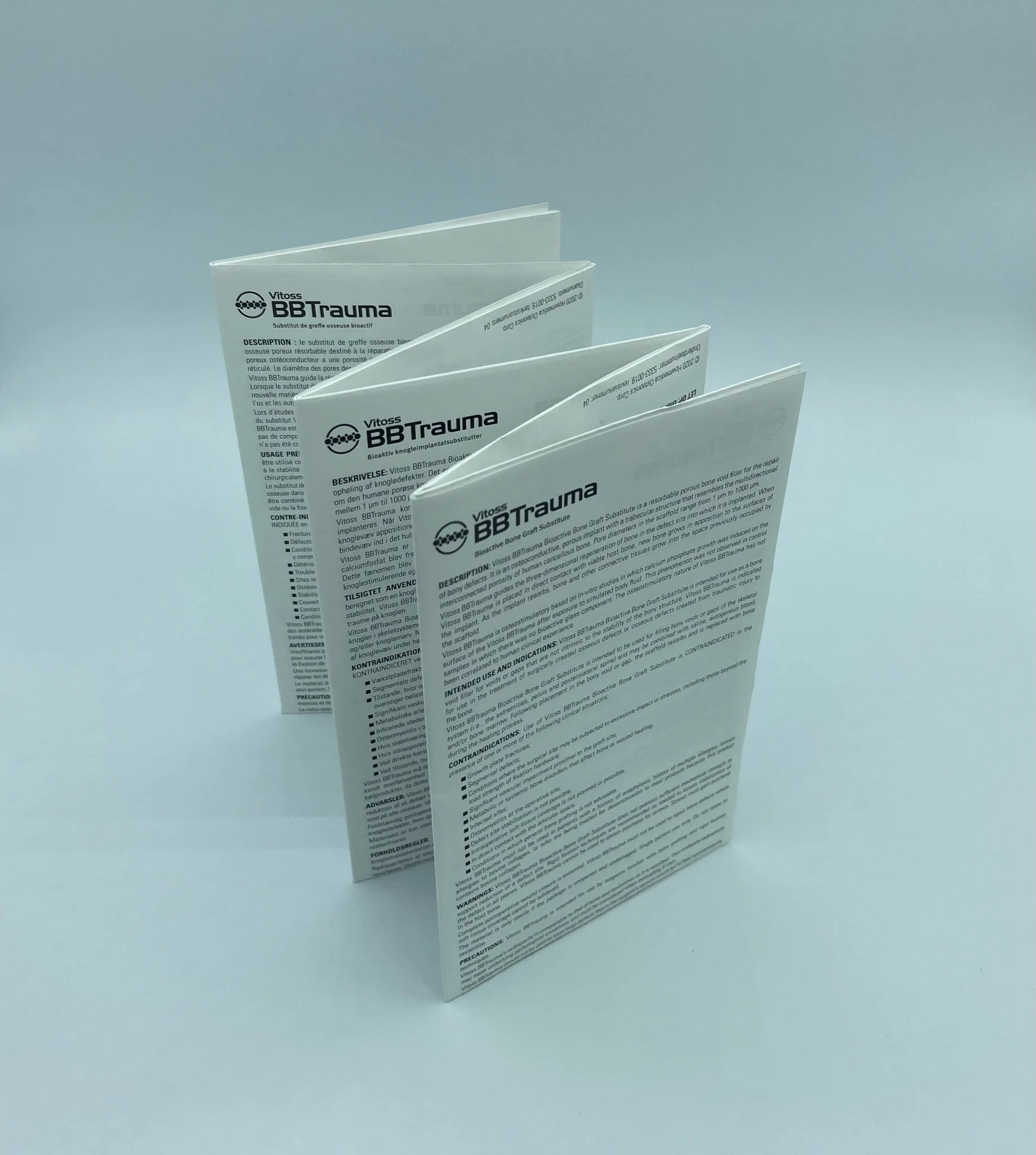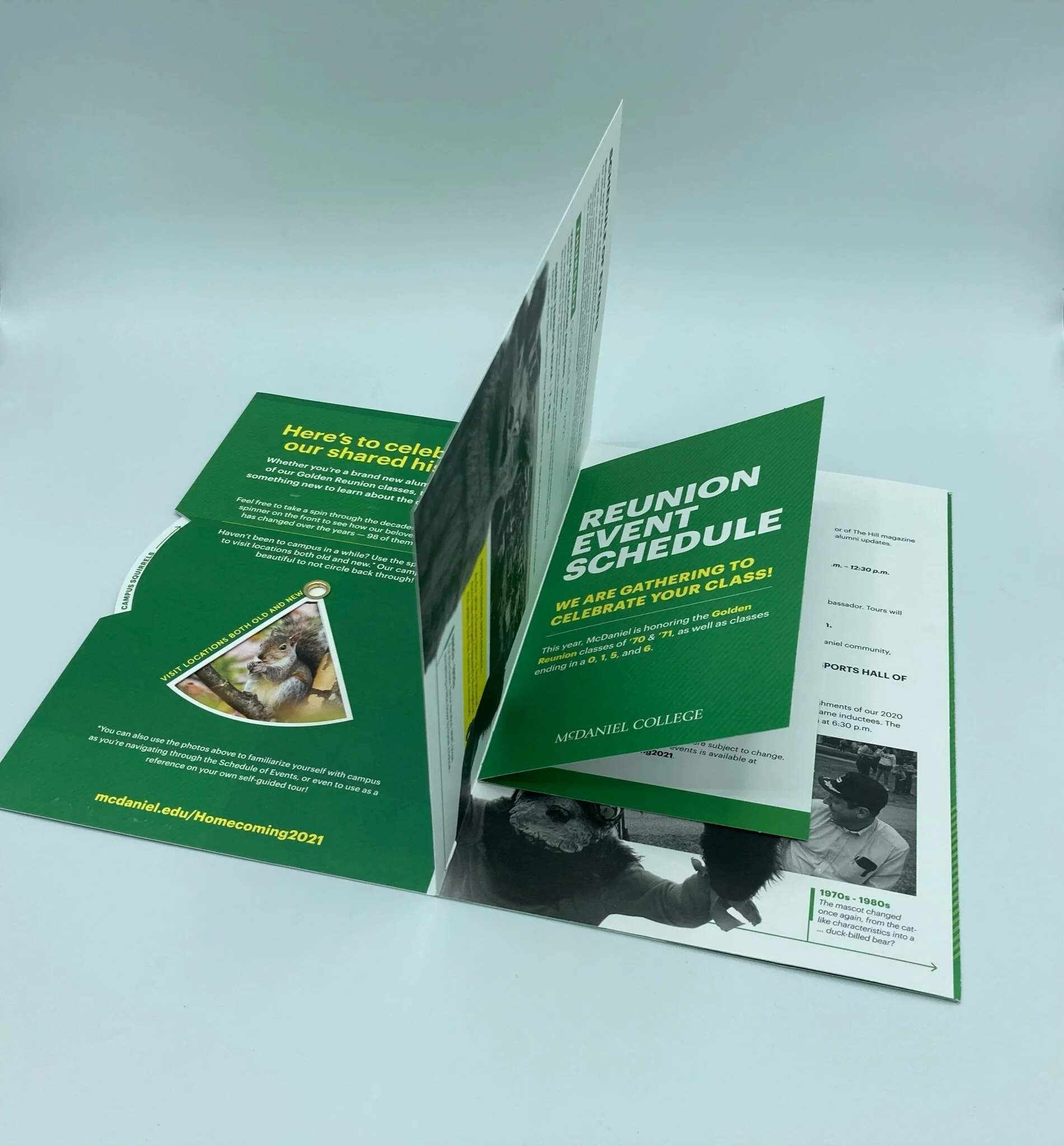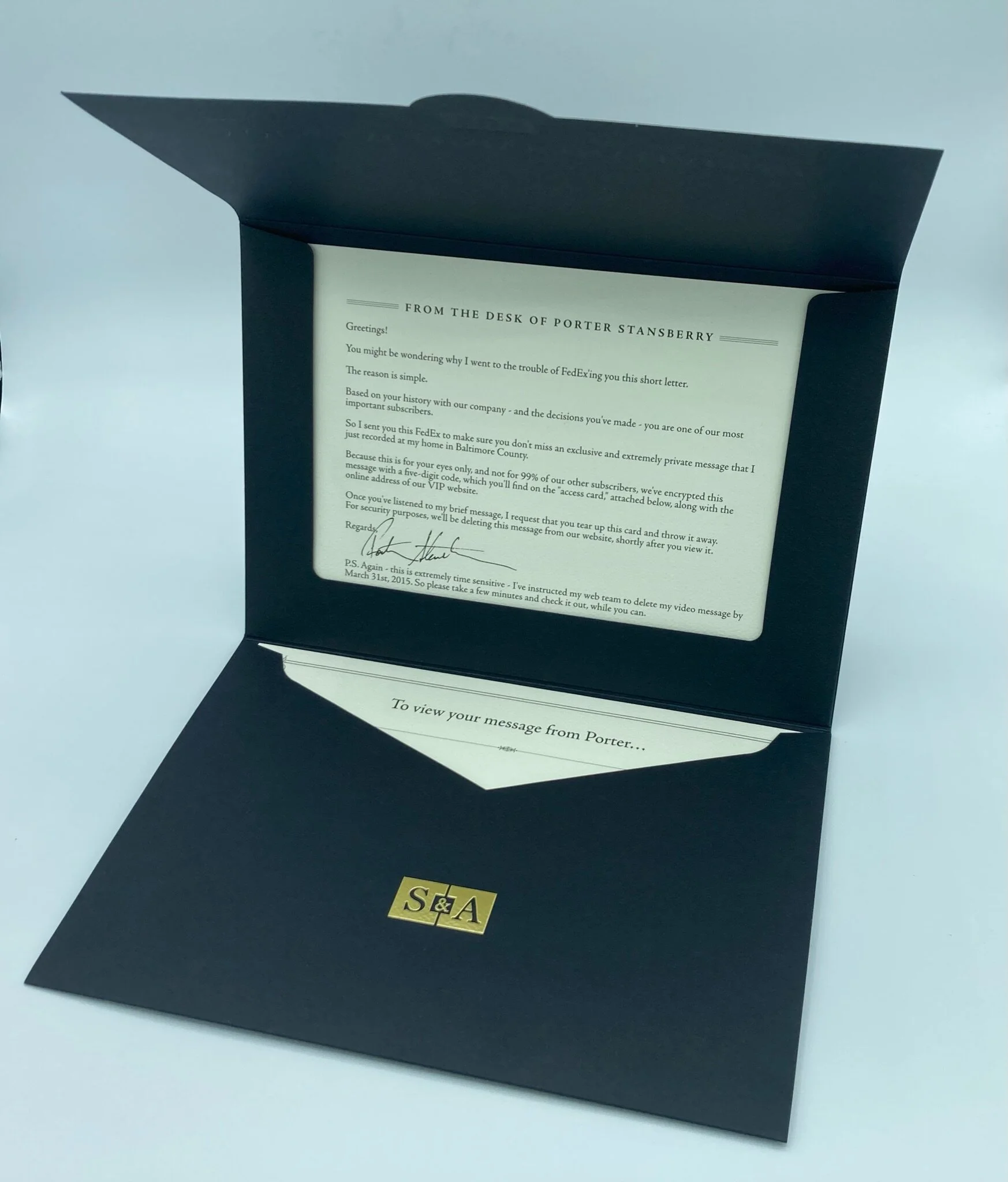Folding

Overview: Bending paper so it lays flat upon itself
What is Folding?
While folding a print design might seem like a relatively simple concept, it’s a great way to physically reduce the size of a printed piece allowing it to fit inside something else, like a folder or envelope. This smaller size can make it easier to disseminate your printed piece.
It’s also used to affordably increase the impact of any printed piece. A tri-fold brochure is one of the most popular options, but business cards, menus, guides, catalogs, and newsletters can all incorporate a fold to increase appeal. Types of folding options Phillips offers include accordion, double gate, parallel, signature, PI, and right angle to match any layout or design needs. In addition, processes such as scoring, perfing, and various glue options (including remoistenable, fugitive, and permanent glues) can be performed inline.
Choosing Paper Type
The type of paper used in a folding job is by far one of the most important factors in the folding process. The quality of paper should look and feel good, while also remaining functional for your printing project.
Benefits of Folding
Ability to fit more on a page while also remaining compact
Affordable way to increase the impact of a printed piece
Folding CapabilitieS
Standard
Maximum sheet size 32 x 50
Double gatefold, right angle, parallel
application of permanent, fugitive, and remoist glue during the folding process
Miniature
Maximum sheet size 14 3/16 x 25 1/2
Minimum sheet size 3 1/4 x 3 1/2
Maximum sheet thickness .0085
Minimum sheet thickness 27# offset
Minimum fold 3/4"
“I have used many other print finishing partners, but Phillips is the most trustworthy and my go-to for honest, quality work. I never feel like I am second rate.”
Project Samples
This Axe Body Spray promotional, collapsible box utilized a glue detection system for straight inline gluing. As an overflow project, Phillips shipped the service flat to save on space and time.
This holiday greeting card was foil stamped and die cut to add an eye-catching finishing touch. It was folded into fours and carton packaged for shipment.
This Hertz Tri-Fold Tesla Promotion Mailer was a very intricate piece with die cuts to the outside for the arrow point panels and glued pockets for quick info pull-out tabs.
This Vitus Deodorant Box was stripped, trimmed, glued, and folded to hold 30 packets of deodorant samples.
This John Hopkins Discover Kit included: a folder, journal, and shipment box that was sent to prospective students. This job included just about every type of finishing service. The folder itself was double glued and automated through a sprint unit to ensure everything would be held together in tact.
This John Hopkins Discover Mailer Box was part of a larger kitting job. It includes a zip strip perforation to make it easier for prospective students to open the package.
This Pennsylvania Lottery Box was held at various service stations with pamphlets to promote the lottery. It was created as a crash lock box to snap into place so it's more sturdy when it stands up.
This Listerine Oral Health Wire-O Bound Flip Book is used for product promotional purposes in the waiting rooms of dentists' offices. Three die cuts were created for the outer cover, inner tabs, and back cover. It was collated, glued, folded, and punched to get the finished look.
This Exservan Oral Film Wire-O Bound Flip Book serves as an informational piece to ALS patients where swallowing medications is difficult. It promotes the film form instead of the pill form. This piece is great for those who would use it for a presentation or in sales.
This GameStop Pokemon Promotional Pamphlet was trimmed on the guillotine and power-packed for easy distribution. It's included on the inside of games to promote the game to players.
This Garden of Life Supplement crash lockbox makes it easy to package any product for consumer use. Stripping, die making, and double face tape was applied to give this box a precise look and keep everything in tact.
This VOD Diagnostic Criteria Card was created all in one piece with a small fold-out section and double glued panel to lay on top. Using fugitive glue, it was fed through a multi-feeder to attach the risk factor card, making it easier for patients to spot VOD symptoms.
This multi-dimensional USPS Small Business Folder was hand folded and glued for a unique look. It includes fold outside descriptions and a deep pocket folder to house additional printouts and material.
This long, narrow Sucrose Intolerance Brochure was glued and folded with a final fold. Within the brochure, there's a thumb cut to pull out additional prescription information. The mail panel was also completed in-house to streamline the distribution process so it could go straight to the post office and mailed to homes.
This Global Atlantic Capacity Folder includes more than one crease in the pocket to hold lots of material. It was made on a sprint unit that forms the tabs with automatic glue. Handwork was used at the end to compile the one sheeters in the pockets
This Vitoss BB Trauma Prescription Fold Out was a more complicated order due to the number of folds and thin paper. The sheet was trimmed on a guillotine cutter and accordion and wrap folded to make it small enough to include within the prescription box.
This Vaxelis Vaccine Brochure was saddle-stitched on a Heidelburg stitcher with an automatic insert for personal information. It was then shrink-wrapped for easy distribution.
This ifm Installation Instructions Booklet was written in three different languages to accommodate the countries the product would be sold in. It was sent in a larger sheet and was trimmed to fit. From there, the booklet was hand-assembled in chronological order and bound with two up stitching to keep the pages intact.
This Comfort One Shoe Catalogue utilized saddle stitching to showcase the latest shoe trends to customers in the area. It was packaged in a carton to be shipped out to a mail house thereafter.
This McDaniel College Homecoming Booklet features an eyelet and die-cut to reveal the spinning window. Perfect hand alignment was also utilized to stitch the short page on the inside of the booklet.
This John Hopkins University Discovery Journal was part of a larger kitting job. The journal itself is a perfect-bound book with a spine glued backbone and cover weight stock as the cover. Folding and trimming were also completed to give the booklet the finishing touches.
This Ed London Company Catalogue featured holiday wreaths for customers. It was folded in a very specific sequence to ensure the order of pictures made sense, where it was then glued and perfectly bound.
This 1/2 inch thick, collated Wire-O bound Expo-Guide includes a 3:1 punching for the bind. The sheet in the middle of the book folds out to better illustrate the convention layout, while still maintaining the guide's width parameters. It’s a great interactive piece for any business marketing.
This high-value foil stamped and embossed invitation folds out to reveal a pocket with a hand inserted card. Individual and variable stocking delivery was included. It’s a great alternative if you’re looking to level up your event.
This counter brochure stand is mounted on a chipboard for maximum sturdiness. Set up as a monthly reoccurring order, these stands are shrinkwrapped for convenient delivery.
This collapsible, four-corner, shelf packaging box was hand-glued to keep the box upright. For shipping convenience and to condense space, the box was provided to the customer flat.
This automotive paint samples brochure was produced in quantities exceeding 250,000. It includes a fold-out cover with gluing and precision, trimming and alignment to very exacting standards then packaged in cases of 500 and shipped to numerous distribution centers.
This cosmetic promotion binder with loop stitching insertion and rounded die-cut tabs was designed to showcase Covergirl products and services easily and cleanly. The loop stitch design allows the booklet to be inserted in a 3-ring binder of other materials as an alternative to drilling or punching.
This MBO accordion fold fundraiser brochure was mailed out to donors in a fugitive glue shut (peel off) adhesive envelope. For ease and convenience for respondents, a remoistened gum glued self-return envelope was included.
This Pharmaceutical stitched-bound brochure took precise die-cutting and trimming to ensure the fairy wing on the edge was included. For ease of distribution to different practices, the brochures were shrink-wrapped in packs of 10.














